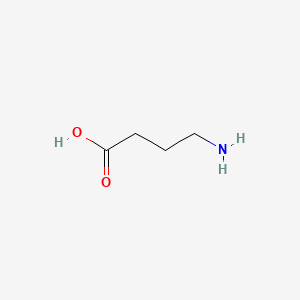| MeSH term | MeSH ID | Detail |
|---|---|---|
| Intellectual Disability | D008607 | 13 associated lipids |
| Glioma | D005910 | 112 associated lipids |
| Cell Transformation, Neoplastic | D002471 | 126 associated lipids |
| Obesity | D009765 | 29 associated lipids |
| Bradycardia | D001919 | 13 associated lipids |
| Adrenoleukodystrophy | D000326 | 29 associated lipids |
| Genetic Diseases, Inborn | D030342 | 4 associated lipids |
| Alzheimer Disease | D000544 | 76 associated lipids |
| Hyperplasia | D006965 | 34 associated lipids |
| Magnesium Deficiency | D008275 | 9 associated lipids |
| Peripheral Nervous System Diseases | D010523 | 33 associated lipids |
| Fetal Diseases | D005315 | 8 associated lipids |
| Multiple Sclerosis | D009103 | 13 associated lipids |
| Cerebral Hemorrhage | D002543 | 13 associated lipids |
| Nervous System Diseases | D009422 | 37 associated lipids |
| Hypoparathyroidism | D007011 | 2 associated lipids |
| Ataxia | D001259 | 20 associated lipids |
| Brain Edema | D001929 | 20 associated lipids |
| Alcoholism | D000437 | 27 associated lipids |
| Starvation | D013217 | 47 associated lipids |
4-aminobutyric acid
4-aminobutyric acid is a lipid of Fatty Acyls (FA) class. 4-aminobutyric acid is associated with abnormalities such as Epilepsy and Premenstrual syndrome. The involved functions are known as Binding (Molecular Function), neuron survival, Process, Uptake and physiological aspects. 4-aminobutyric acid often locates in Microglial, Neurofilament, Neuraxis, Brain region and Neurites. The associated genes with 4-aminobutyric acid are arginine methyl ester, SLC33A1 gene, NKS1 gene, P4HTM gene and ITSN2 gene. The related lipids are pregnenolone sulfate, pregnane-20-one, Pregnanes, Steroids and endogenous steroids.
Cross Reference
Introduction
To understand associated biological information of 4-aminobutyric acid, we collected biological information of abnormalities, associated pathways, cellular/molecular locations, biological functions, related genes/proteins, lipids and common seen animal/experimental models with organized paragraphs from literatures.
What diseases are associated with 4-aminobutyric acid?
4-aminobutyric acid is suspected in Premenstrual syndrome, Epilepsy and other diseases in descending order of the highest number of associated sentences.
Related references are mostly published in these journals:
| Disease | Cross reference | Weighted score | Related literature |
|---|
Possible diseases from mapped MeSH terms on references
We collected disease MeSH terms mapped to the references associated with 4-aminobutyric acid
PubChem Associated disorders and diseases
What pathways are associated with 4-aminobutyric acid
There are no associated biomedical information in the current reference collection.
PubChem Biomolecular Interactions and Pathways
Link to PubChem Biomolecular Interactions and PathwaysWhat cellular locations are associated with 4-aminobutyric acid?
Visualization in cellular structure
Associated locations are in red color. Not associated locations are in black.
Related references are published most in these journals:
| Location | Cross reference | Weighted score | Related literatures |
|---|
What functions are associated with 4-aminobutyric acid?
Related references are published most in these journals:
| Function | Cross reference | Weighted score | Related literatures |
|---|
What lipids are associated with 4-aminobutyric acid?
Related references are published most in these journals:
| Lipid concept | Cross reference | Weighted score | Related literatures |
|---|
What genes are associated with 4-aminobutyric acid?
Related references are published most in these journals:
| Gene | Cross reference | Weighted score | Related literatures |
|---|
What common seen animal models are associated with 4-aminobutyric acid?
There are no associated biomedical information in the current reference collection.
NCBI Entrez Crosslinks
All references with 4-aminobutyric acid
Download all related citations| Authors | Title | Published | Journal | PubMed Link |
|---|---|---|---|---|
| Vogensen SB et al. | New synthesis and tritium labeling of a selective ligand for studying high-affinity γ-hydroxybutyrate (GHB) binding sites. | 2013 | J. Med. Chem. | pmid:24053696 |
| Huehnchen P et al. | Assessment of paclitaxel induced sensory polyneuropathy with "Catwalk" automated gait analysis in mice. | 2013 | PLoS ONE | pmid:24143194 |
| Valdeolivas S et al. | The inhibition of 2-arachidonoyl-glycerol (2-AG) biosynthesis, rather than enhancing striatal damage, protects striatal neurons from malonate-induced death: a potential role of cyclooxygenase-2-dependent metabolism of 2-AG. | 2013 | Cell Death Dis | pmid:24136226 |
| Owada K | [Therapeuetic aspects of cluster headache in the practical clinical site]. | 2013 | Rinsho Shinkeigaku | pmid:24291904 |
| Liu J et al. | Pharmacological treatment for pain in Guillain-Barré syndrome. | 2013 | Cochrane Database Syst Rev | pmid:24142399 |
| Kostić N et al. | Effects of derivatization reagents consisting of n-alkyl chloroformate/n-alcohol combinations in LC-ESI-MS/MS analysis of zwitterionic antiepileptic drugs. | 2013 | Talanta | pmid:24148378 |
| Gialanella B et al. | Low back pain radiating to the leg: an atypical cause. | 2013 | Clin Ter | pmid:24217828 |
| Muhammad SI et al. | Upregulation of genes related to bone formation by γ-amino butyric acid and γ-oryzanol in germinated brown rice is via the activation of GABAB-receptors and reduction of serum IL-6 in rats. | 2013 | Clin Interv Aging | pmid:24098073 |
| Owusu-Ware SK et al. | Novel analytical approaches for the study of mobility and relaxation phenomena in positional isomers of GABA. | 2013 | Phys Chem Chem Phys | pmid:24154789 |
| Thangamani D et al. | The anticonvulsant enaminone E139 attenuates paclitaxel-induced neuropathic pain in rodents. | 2013 | ScientificWorldJournal | pmid:24385872 |
